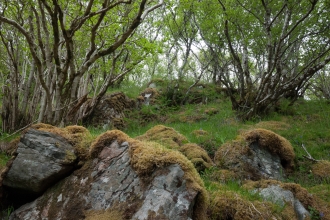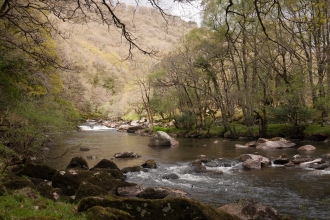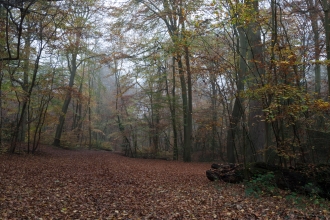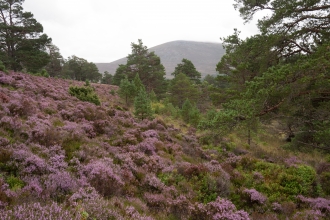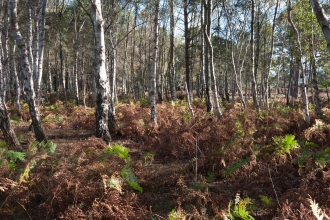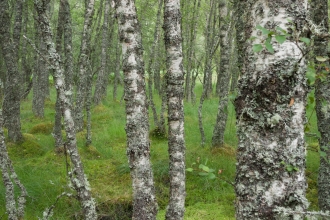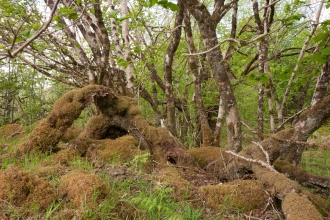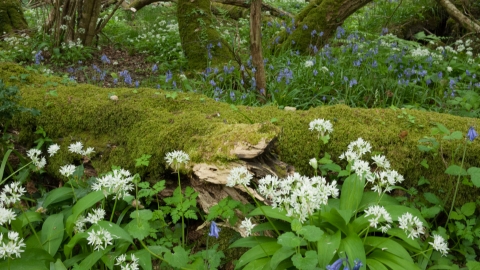

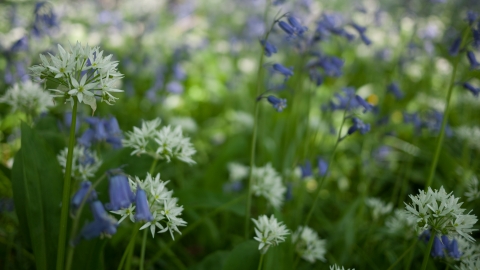

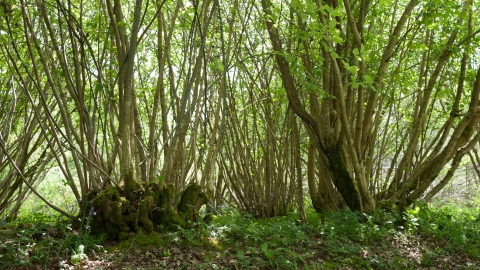
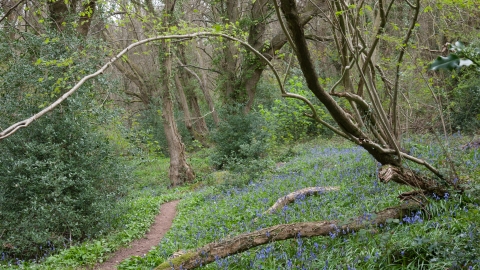
Lowland mixed oak and ash wood
Beth yw o?
This is the archetypal woodland of the lowlands. Growing on deep, fertile brown soils, oak and ash usually dominate the canopy, with a tall understorey of hazel and field maple and rambling honeysuckle. In many, sycamore, suckering elms and sweet chestnut have also colonised or been planted, and in some places hornbeam or lime may form the canopy. On acidic soils, bluebells may form an intense blue haze in spring, often with wood anemone, while a carpet of Dog’s mercury or ramsons indicates more limey conditions - although not so colourful, this may be more species-rich with the possibility of woodland rarities such as herb Paris and Solomon’s seal.
Pam fod o fel hyn?
Although we cherish these woodlands for their serenity and a sense of continuity with the wildwoods of the past, they have been shaped by human activities over millennia. Most were managed through coppicing - cutting stems at ground level and allowing them to re-grow to harvest again for firewood, charcoal or other uses in a few years, resulting in a multi-stemmed bush. This practice, which was almost universal by the Middle Ages, periodically opened-up the canopy and provided the edge habitat favoured by many woodland specialists. Some trees were left to grow as standards for timber, either as “maidens” or pollarded (cut at head height allowing multiple stems to grow from the trunk). However, coppicing became uneconomical with the arrival of coal and many woodlands were abandoned, cleared or overplanted.
Dosbarthiad yn y DU
Found scattered throughout the lowlands.
Beth i edrych am
Rare woodland butterflies and spectacular spring flowers still flourish where coppicing continues (mostly on nature reserves). The best places to look are clearings, glades and edges. In calcareous woods, look for rarities including greater butterfly-orchid among the pignut, yellow archangel, primrose, bugle and enchanter’s nightshade. Look for purple hairstreak butterflies high in the canopy and silver-washed fritillary flying along rides - species that favour openings such as pearl-bordered fritillary, small pearl-bordered fritillary and Duke of Burgundy are now harder to find. Spotted flycatchers may hunt from trees on the edges of clearings, and listen out for other summer migrants such as garden warbler - if you are lucky you may hear a nightingale serenading from areas of scrub. Dormice also favour scrub – empty nut shells with oblique tooth marks give away their presence. Mature trees provide excellent nesting opportunities for woodpeckers, whose holes may be used by roosting bats. Dead wood is ideal for invertebrates such as stag beetle (the largest terrestrial insect in Europe) and for fungi (look out for the bright orange bracket fungus, chicken of the woods).
Cadwraeth
For most of these woodlands, traditional management is no longer economically viable. Abandonment or management for timber results in the loss of open patches and has led to massive declines in many woodland birds, moths and butterflies, while overgrazing by wild deer is reducing natural regeneration. At the same time, many woodlands are small (on average less than 20 ha) and surrounded by intensive agriculture (exposing them to nitrogen pollution), while the loss of hedges has reduced connectivity between woods. The impacts of ash die-back, first found in the UK in 2012, are unknown, but may result in changes in species composition. Conservation needs to reintegrate woodland management with local economics (e.g. through sensitive management for woodfuel) if it is to be sustainable. However, within existing high forest, there is also a place for non-intervention to allow natural processes to function.

